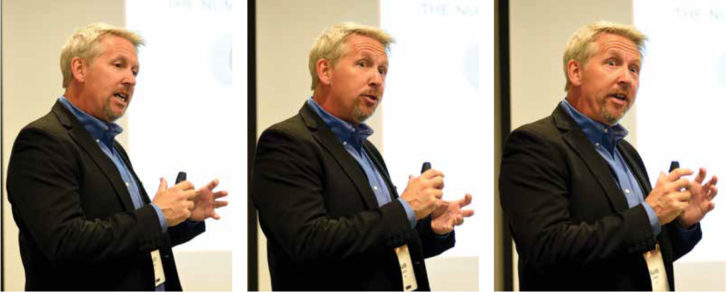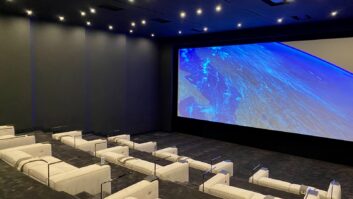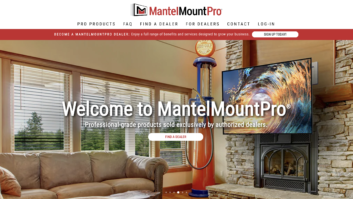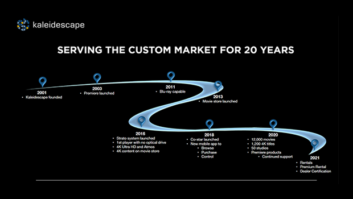At the Home Technology Specialists of America (HTSA), we have been running Relationship Science Masterclass seminars for our members to enhance their businesses by increasing sales with existing clients, attracting new business, and building deeper interactions with partners, including architects, builders, and designers. The goal of the program is to improve the people skills of our teams — those key relationship-building skills — to the same amazing level as their design and specifying skills. Our members asked for it, demanded it even, because they feel their teams and clients deserve nothing less.
For many years, the ability to describe and specify was all it took to win business. Today there is so much competition, particularly from new smaller dealers (those nimble two-man crews who often offer the same products and tout similar install and programing skills as we do) that it can be hard for a client to tell the difference between what they do and what our members can deliver. That’s pressure. Plus, think about all that is looming from global businesses like Google and Amazon. These are massive players who see our industry as a huge profit possibility and who would love nothing more than to take our industry and make it their own. We face serious threats from both sides.
That means we need to bear down and improve the things that they can’t do.
At our HTSA board meeting in the fall of 2018, the board did a SWOT analysis to determine how we might best maintain and extend whatever lead we have as the best trade consortium. We came to the conclusion that there was a real opportunity to separate ourselves from the herd, but it wasn’t through brands, it wasn’t through products, and it wasn’t through specifying. We felt that there had been an ongoing erosion in the selling skills of our teams, and, more broadly, of our industry sector as a whole, and that if we could fix that and make it our unique strength, we could really see transformational results.
I was brought into the group in February 2019 by executive director Jon Robbins to help them do just that, and we launched Relationship Science as our solution to this problem.

Implementing Change
Through my many years of experience, including long stints in sales and training at Tweeter and as a learning and development leader at Walmart U.S., the thing that shaped me most was the realization that truly effective training is not merely about information, but about inspiration. And that every aspect of a training event matters, and none more than the way the guests experience for themselves the ideas or approaches being taught.
If you want to really change people — to create change in their minds, change in their behavior, and in how they run their business — it takes way more than just being a decent presenter in the front of the room. That’s important, but it’s only a part of a much greater whole. There’s an art and science to changing behavior in grown-ups and it involves having them be transformed by an experience that you just cannot learn from trial and error on the sales floor. So at HTSA, we’re taking the training experience — the learning development experience — to a whole new level because we’re taking the sales and client interactive experience to a whole new level, too.
The unspoken goal that our members had in their minds at the beginning but couldn’t quite articulate was that they really wanted a culture shift in their business. They wanted to shift it from the stale “corner and close your victim” approach to a model that aims to create lifelong connections with every single guest that comes in. And our Relationship Science program is as much about culture shift within the dealer teams as it is about changing the sales tactics.
When people ask me what a Relationship Science event is, I always tell them it’s an interactive, unexpected experience. It draws from an amalgam of the science of common human tendencies, behavioral science, the art of ethical persuasion, neuroscience, and more. It is NOT about “tricking” people into buying something they don’t want or need. It is about helping people make a positive decision that is truly and absolutely in their best interest. We call it training, but it’s significantly and deliberately much more than that. The first thing I tell each group is, “You’re going to know 90 percent of what we cover, but we’ll be covering like 50,000 ideas, so you do the math on how much will be new!” And, more importantly, it’s as much about what happens to them, how they’re treated, and how they experience the new approaches for themselves as it is about any particular skill or tactic being taught.
One of the goals that I set out for every trainer I’ve ever trained was that every one of their guests should walk away better for having met them. And for their sessions to be so impactful that it becomes impossible for participants to go back to their old ways after having been through the experience we deliver, no matter what other old-school salespeople might try to do to influence them otherwise. And in Relationship Science I have the better part of three days to do that, with an experience that’s built around sales training, but applies far beyond that as well.
At the start of the event, we list all the things that might masquerade as goals of a “sales training”: closing deals faster; closing bigger deals; building more profit in your business; higher revenue… Then we identify that those are really just the outcomes of our true goal, which is to create permanent, lasting relationships with everybody we run into. Of course, this is a business situation, so we focus on the business applications, but it doesn’t take too much effort to zoom out and realize it’s applicable to your friends and your family and even the people that are waiting on you when you are the client. It truly is selling beyond the sale.
Essentially, we look at every element of a truly complete sales interaction through multiple new lenses. The whole approach is taken from a client perspective, which most people say, but can’t manage to do. It’s tricky. We look at it through a lens of ethical influence; a lens of a totally redefined understanding of what the client experiences, and even through a lens of neuroscience and brain chemistry. This leads to the upending of many flawed assumptions the industry has (and perpetuates) about what selling looks like. The result is that we come away with an entirely new sales model filled with unexpected approaches and counterintuitive techniques. The idea is to remove pain and increase gain for all involved, and totally change the game for not only the sales team, but also for the client.
Begin With the Outcome
An important aspect of our event is that we start with the outcome in mind: creating a lifelong relationship and becoming their expert friend in the business. The idea is to work backwards from there and make sure you thrill the client throughout the entire experience without it ever feeling like an argument. Even before we meet a client, we can fall into the trap of thinking — because we built a showroom or have expertise and can get all these products — that people somehow owe us a little something, a little deference, a little extra respect. But look at the situation from the client’s perspective. How are they feeling as they enter our turf? They’re feeling nervous, sure, but also maybe feeling a bit put out. They had to leave their house. Leave their family. Leave the safety of the internet where they don’t have to talk to you. Drive across town and risk an accident. Find your parking lot and then walk into this intimidating, high-end, hi-fi place. So I ask you, who owes whom?
I’m pretty sure we owe them.
In that same “client welcome” discussion, we flip the script on what everybody has been told throughout their whole lives, so it becomes not about you making a good first impression, but how you can help the client make one. From the second you answer the phone or open the door you’re providing a unique and unexpected experience. How can you be the first person in their quest for a smart home that doesn’t condescend, overcomplicate, make them nervous or feel like they’re in a compromised position? That’s one small example of Relationship Science in action.
We have also been working on the budget and price conversation. Not everyone is concerned about the cost, but when people do have a budget concern or price is on their mind, you need to address it with visible comfort. If we lead with, “We don’t talk about price,” the process becomes one long argument with our client now just tolerating our tech-talk while thinking about nothing but the number. If you refuse to give it, making it an argument, everybody starts digging in, which is, of course, the exact opposite of where we want our clients. They deserve better than that, yet that is generally how we posture as an industry. So we’ve turned the budget discussion from a verbal wrestling match with the salesperson on one side of the table and the client on the other, into one where the buyer and the seller are on the same side of the table, working together to accomplish something awesome.
Here’s a gem that all my old Tweeter friends will know: Don’t Show the Shark. In the movie Jaws you don’t see the shark until almost 90 minutes into the movie. Suspense builds until you’re on the edge of your seat, and when he’s finally revealed you know that things are going to get even better. And that’s how the reveal of their proposed system products project ought to be. Everybody wants to rush in to talk about product and technology and installation skills when the clients aren’t even done telling you what they are looking for! Don’t show the shark: Keep people talking about their dreams and build the suspense, the excitement, and the anticipation of the big reveal as you design their personal custom “shark” behind the scenes. We don’t talk about technology in any specific detail until we are well into the proposal.
That’s really what we teach our people — to be intentional and awesome about every aspect of the client experience. It’s better, it’s easier, it’s fun, and it’s not what everybody else does.
Getting Buy-In
Of course, this kind of thinking is the opposite of what most salespeople are used to, or have been taught to do. So the first thing I tell them is that they don’t have to do any of it. I take the argument out of it, which makes everyone more comfortable and more open to change. It’s as good a rule for training as it is for selling. Just like you can get a client to decide to buy everything by telling them they don’t have to buy anything, you can get seasoned, experienced sales veterans to drop their guard and adopt radical new techniques just by telling them they don’t have to.
At the session level, you need to make people feel like making all this change is their decision. That’s why in any of our events the group does at least half the talking. I’ll throw stuff out there and let them think it over, kick it around, whatever. They debate and scrutinize every idea until it truly becomes clear. And the ones they love they take home and use forever.
Because it’s an event — an experience, not a class — I employ these new approaches I’m recommending throughout the session with them. I try to model all of it and approach my sale, which is to close them on a long-term relationship with me and on my ideas, with this new approach, so they feel it happened to them. Rather than having Keith Esterly telling them to do it, they decide for themselves that it’s worth it because they’ve experienced it. I can’t tell them how to do their job, but I can show them the value of Relationship Science. And to their credit, they’ve been willing to listen.
The Results
I’m constantly asking the groups for their feedback to find the things that work and what successes they’ve had, and they’ve had plenty; tons of success stories in terms of revenue, bigger sales, in closing sales more quickly, in having clients become truly friends rather than just a project. But it’s also about how the HTSA members’ teams themselves are changing. The feedback has been that they’ve adopted this more positive, collaborative approach with clients and also with their installation, service, and support crews.
HTSA truly is changing the game when it comes to the human side of custom integration and smart technology. Because we’re member-owned, member-driven, and client-focused, we have been able to get aligned quickly and set a high bar with this new goal of changing the sales game to a relationship-based one. Our clients and our members deserve nothing less. And that’s really my mantra when it comes to this event, as well as to the sales process as a whole: It has to be amazing and unexpected, because if people are going to give us six-figure checks or spend three days of their lives in a room with me, it simply has to be great, and they have to walk away with something that’s life-changing.
More Tips on Selling: Supercharge Revenue By Increasing Your Average Sale







